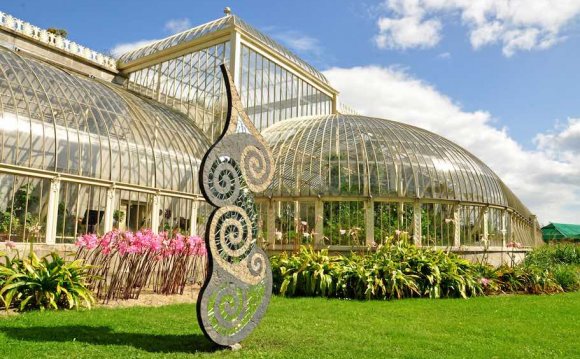
 The Creating Landscapes Diploma will provide students with knowledge and skills in the theories and principles guiding meaningful landscape design and in the techniques used to create landscape drawings. The depth and breadth of student knowledge and skills will be expanded through practice, in particular, a Capstone Landscape Design Project that amalgamates many important aspects of design practice.
The Creating Landscapes Diploma will provide students with knowledge and skills in the theories and principles guiding meaningful landscape design and in the techniques used to create landscape drawings. The depth and breadth of student knowledge and skills will be expanded through practice, in particular, a Capstone Landscape Design Project that amalgamates many important aspects of design practice.
The Creating Landscapes Diploma is designed for:
- Landscape professionals wishing to develop or improve design skills
- Homeowners wanting a better understanding of the design and function of their landscape environment
Benefits for students:
- Analyze what landscape sites offer and relate those criteria to client needs
- Recommend durable and functional materials to be used in the construction of specific landscape features
- Practice both CAD and hand drawings techniques that will help you communicate design intentions more effectively
- Understand how to be more creative and unique in developing landscape design solutions
- Learn and implement design strategies to create aesthetically pleasing, functional and sustainable landscapes
- Earn important credentials to promote business
Program Requirements: The existing Creating Landscapes Certificate will serve as the foundation for the Diploma courses. Students must successfully complete all six existing Creating Landscapes Certificate courses as offered by Open Learning and Educational Support before proceeding to the four proposed Diploma courses.
Capstone Landscape Design Project
The goal of this course is to provide a culminating experience in which students can demonstrate their knowledge regarding design thinking and the design process while focusing on a single project. This will include synthesizing knowledge they have acquired in previous and concurrent diploma and certificate courses as well as new information presented in this course. Some of the "new” knowledge will include the integration of cross-disciplinary knowledge in design as well as the connection between graphic design elements and ecological design. The overarching goal of the course is to enhance student qualifications for advancement of their careers. Sustainability will be emphasized and students will be asked to demonstrate their comprehension of sustainable design approaches by applying them in the final design.
Computer Assisted Design II
When communicating the complexities of a landscape design to a client or contractor it is imperative that design intentions are clearly illustrated. This course will give students the knowledge and skills on how to use computer technologies and software (DynaScape) to best illustrate design expectations. By exploring the many facets of DynaScape students can work effectively and quickly to produce landscape plans – a cost efficient benefit.
Exploring and extending skills in graphic communications is the primary goal of this course. Practice and continue to develop hand drawn graphic techniques in plan, section and elevation critical for landscape design students. New techniques for communicating design ideas will also be introduced such as axonometric drawings and the use of colour in presentations.
Designing for Sustainability
Ecological sustainability and stewardship minimize the ecological impact upon the landscape. This course will explore and discuss philosophies and practices that promote the creation of ecological communities in designed landscapes and suggest how natural systems and human environments can best interact through meaningful design. Students will learn techniques to promote sustainability while offering a strong aesthetic solution and a landscape that functions with a desired purpose.
Diploma Courses - Upcoming Schedule
| Course Title | Tentatively Scheduled for... |
| Presentation Styles – Extend Your Graphic Skills | Winter 2016 |
| Designing for Sustainability | Winter 2016, Winter 2017 |
| Computer Assisted Design II | Winter 2017 |
| Capstone Landscape Design Project | Fall 2017 |
YOU MIGHT ALSO LIKE












